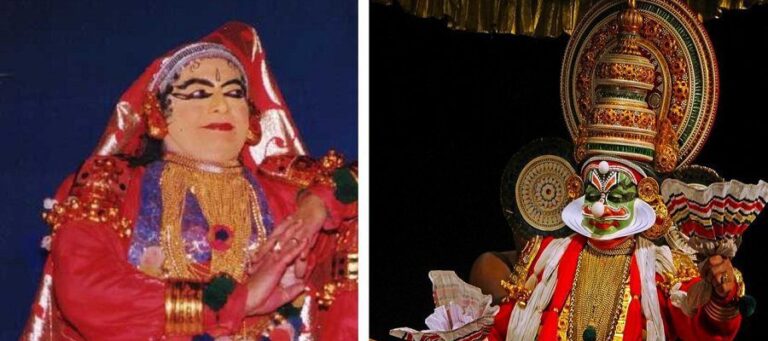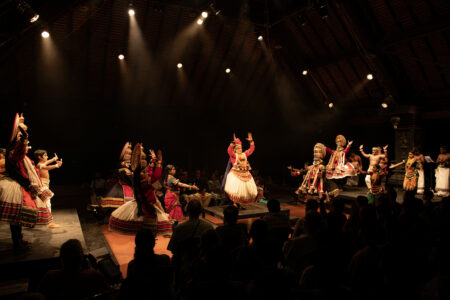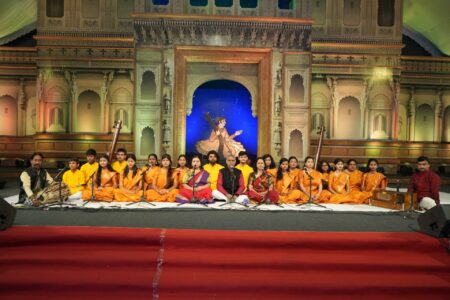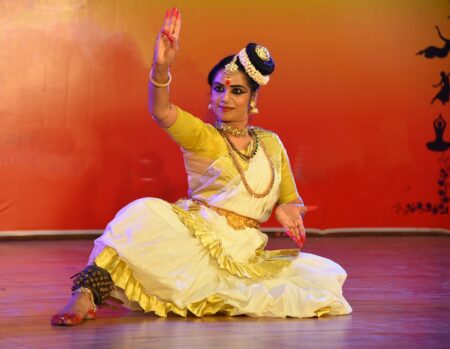Kathakali veterans Mathoor Govindankutty and Madavoor Vasudevan Nair represent an interesting era in the history of the dance drama
All his life, Madavoor Vasudevan Nair was an uncompromising practitioner of the Kaplingadan school of Kathakali, a style that flourished in his southern Kerala. That was strikingly unlike Mathoor Govindankutty who, in spite of his Kaplingadan roots, went on to become eclectic.
Mathoor passed away on February 4, aged 80, just two days before the third death anniversary of Madavoor. Mathoor was diagnosed with Covid-19 after a performance in Kollam.
Mathoor was keen to learn different styles of Kathakali, while Madavoor stuck to the art form’s southern school that came with a fair share of realism and melodrama. Mathoor’s methods too bore the unmistakable Kaplingadan traits he had acquired from his first three teachers, but an advanced stint under Ambalappuzha Sekhar, an alumnus of Kalamandalam, fused into Mathoor the characteristics of central Kerala’s Kalluvazhi system.
Uncanny similarities
Madavoor belonged to a family that had no deep links with Kathakali. He was possibly the first entrant to the art in the household. The Mathoors in Kuttanad, however, boast of over 350 years’ close rapport with the classical form. Kunjupilla Panicker (1873-1929), one of the most hailed in Kathakali, is a member of the clan.
That said, there existed quite a few parallels between Mathoor and Madavoor. For one, both gained the reputation of being the flag-bearers of their guru’s conduct. Mathoor developed the aesthetics of his teacher Kudamaloor Karunakaran Nair, who was renowned for his female roles. The student later married his guru’s daughter AK Rajeswari.
Madavoor, on his part, was almost a replica of his teacher Chengannur Raman Pillai, according to old-timers. They say Madavoor virtually took a cue from Guru Chengannur, especially when it came to the portrayal of antiheroes such as Keechaka, Ravana, Bana and Narakasura.
All the same, Mathoor and Madavoor did have a guru or two before they found their ultimate guide-philosopher. Mathoor was initiated into Kathakali by Nedumudi Kuttappa Panicker. Similarly, Vasudevan Nair: his first guru Madavoor Parameswaran Pillai, more known for his scholarliness though with a popularity that didn’t spread beyond southern Travancore.
For the record, Mathoor also learned under the acclaimed Kurichi Kunjan Panicker (1887-1970).
Mathoor and Madavoor took off as specialists in roles of heroines but ended up competent in male roles. Madavoor branched out into protagonists and antiheroes much before his middle age. Mathoor, however, was into his sixties when he started performing characters such as a Brahmin or sage in a big way.
Influential artistes
Into the last 25 years of their career, both the artistes began enjoying recognition up the state. They received invitations from prestigious Kathakali venues in the districts of Thrissur and Palakkad.
Both the actor-dancers enjoyed their circuits of influence, which they used for the benefit of up-and-coming colleagues. Mathoor would take some of the promises in the field under his wings. As a matter of habit, he would ask organisers to give performance opportunities to those youngsters he found impressive on the stage. Madavoor, who attained the eminence of a patriarch of the Kaplingadan stream, was an uncrowned king in the Kathakali circuits of south Kerala. Any promotional move from him carried immense weight and the sure prospect of fruition.
Not to be forgotten, Mathoor and Madavoor themselves performed together quite often. Often as the central characters playing opposite in story-plays of traditional recognition.
Mathoor’s son Kudamaloor Muralikrishnan and two grandchildren are into Kathakali. Madavoor’s daughter Ganga Thampi is a Bharatanatyam exponent, having learned the classical dance from Kalakshetra in Chennai.
To many, Madavoor appeared pompous and conducted with an elegance. Some would have mistaken it for arrogance. Mathoor, on the other hand, was inherently social. Typically, he spoke with warmth to even much junior artistes. Not surprising, the world of Kathakali is in deep mourning on learning about Mathoor’s unexpected demise.




